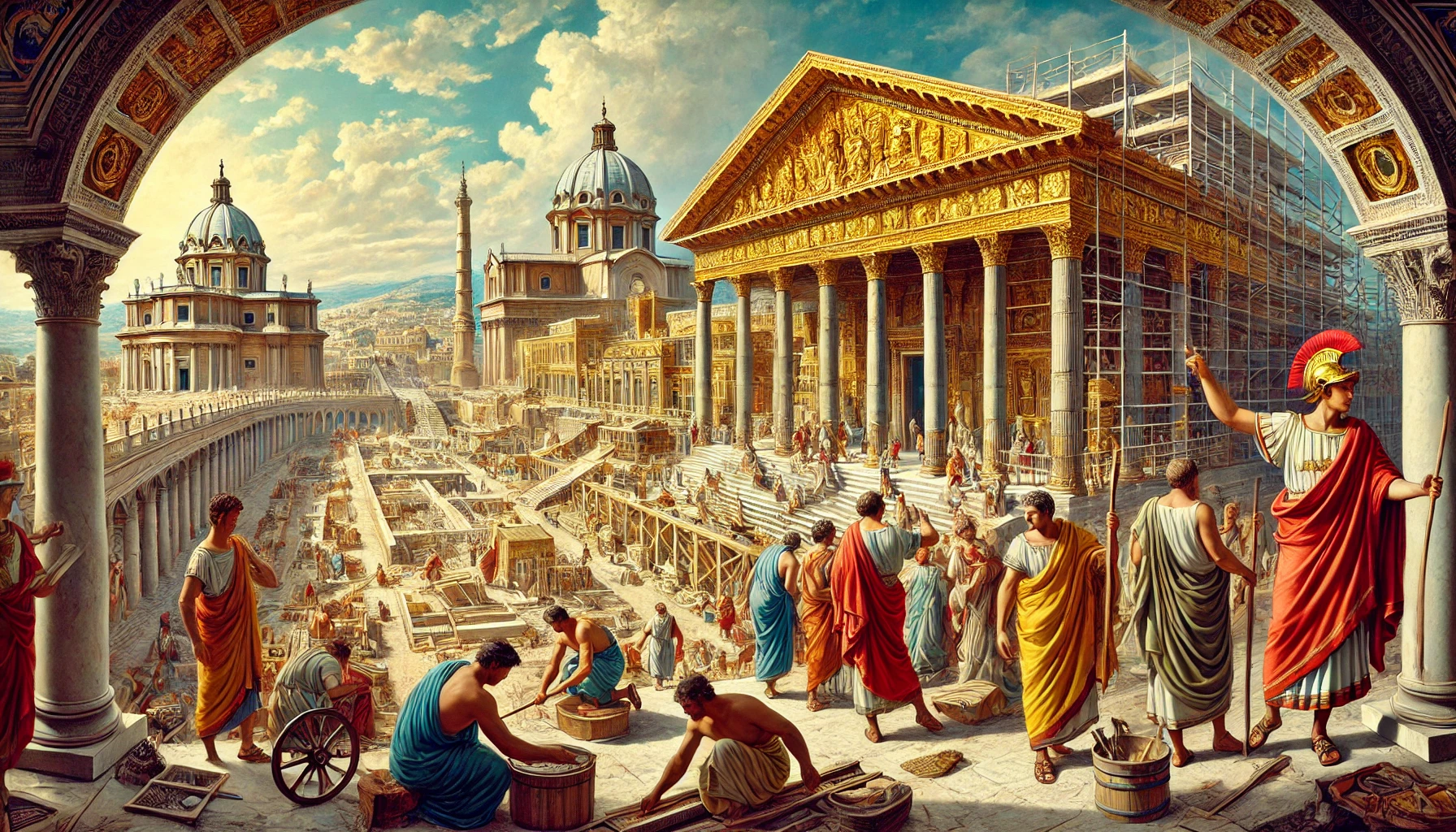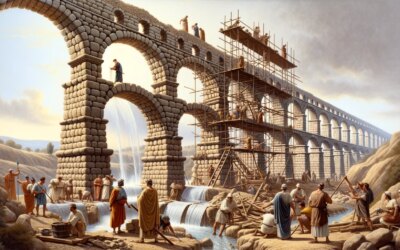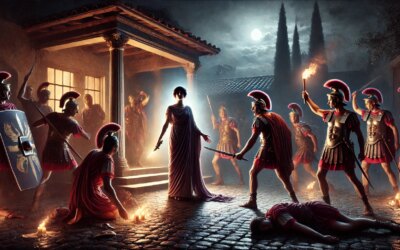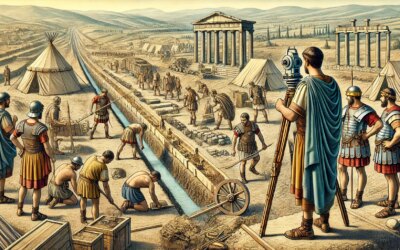The Aftermath of the Great Fire of Rome
In July 64 AD, a devastating fire ravaged Rome for six days, destroying entire districts. While the origins of the fire remain debated, Emperor Nero seized the opportunity to rebuild parts of the city to his liking. His most controversial project was the Domus Aurea, or “Golden House,” a sprawling palace that embodied extravagance and absolute power.
Nero’s Vision: A Palace Like No Other
The Domus Aurea was unlike anything Rome had seen before. Designed by architects Severus and Celer, it stretched across the Palatine, Esquiline, and Caelian hills, covering an area of over 200 acres. Lavish gardens, artificial lakes, and gilded decorations made it a spectacle of wealth.
The palace’s interior featured opulent frescoes by the artist Fabullus, marble-clad walls, and an innovative rotating dining room that simulated the movement of the heavens. A colossal statue of Nero, the Colossus Neronis, was placed at the entrance, further cementing his image as a godlike ruler.
Public Outrage and Nero’s Decline
The extravagant project sparked fury among the Roman elite and common citizens alike. Many viewed the palace as a symbol of Nero’s disregard for the suffering caused by the fire. The belief that he had deliberately started the fire to clear space for his dream palace fueled resentment.
After Nero’s death in 68 AD, his successors sought to erase his legacy. Emperor Vespasian drained the artificial lake and built the Colosseum over it, reclaiming the land for public use. Parts of the Domus Aurea were filled with earth and built over, but its underground chambers remained a hidden wonder for centuries.
The Rediscovery of the Domus Aurea
In the 15th century, Renaissance artists stumbled upon the buried ruins, uncovering its magnificent frescoes. Figures like Raphael and Michelangelo drew inspiration from the palace’s intricate designs, influencing Renaissance art and architecture.
A Monument to Excess and Innovation
The Domus Aurea remains a symbol of Nero’s ambition and excess. While his reign ended in disgrace, the palace he built stands as a testament to Roman engineering, artistic innovation, and the fine line between grandeur and tyranny.






